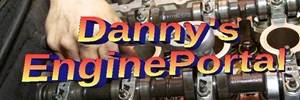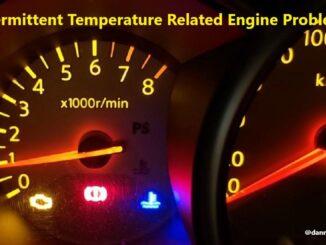
For most people, diagnosing engine problems is not easy. And, can be scary to even think about.
That’s why, our fear of the unknown, is what makes engine problems so scary.
So, if you own a vehicle there are a few common engine problems that every driver runs into, sooner or later.
And, there are many different types, of engine problems your vehicle can face.
Some problems are just uncomfortable, while others, can prevent the vehicle from moving. So, it turns out, there are a few common engine problems, that seem to affect engines on a regular basis. Not all drivers have the ability to diagnose and properly fix, whatever engine problems that might come up.
Knowing the signs and symptoms, of some of the most common engine problems, can save you time and money. However, not all engine problems are serious. And, some can be fixed relatively quickly.
Here Are Some Of The Most Common Problems:
Oxygen (O2) Sensors
The (O2) sensors job is to detect, unburned (O2) in the exhaust. So, as your vehicle ages, your (O2) sensor becomes worn, and is often due for replacement. Also, early failure can be brought about by other failures, like blown head gaskets. As a result, causing engine problems.
So, (O2) sensors are one of the most important parts, on a modern vehicle’s engine management system. And, are responsible for monitoring, the air to fuel mixture of the engine. (O2) sensor readings, affect important engine functions. Such as timing and air to fuel mixture. However, over time with normal use, (O2) sensors can begin to function, with a delayed response. And, at some point, will eventually fail.
Some Of The Typical Symptoms, Of A Failing (O2) Sensor Include:
- Decreased engine performance
- Decreased fuel economy
- Engine misfires
- Rough engine idle
Usually, a failing (O2) sensor will set off, a (CEL). And, will tell you which sensor, on what bank has failed. Replacing an (O2) sensor, is an extremely common repair in older vehicles. Because, your (O2) sensor is a vital part, of your vehicle’s exhaust system.
Catalytic Converters
So, the catalytic converter, is an emissions related part, that is part of the exhaust system. As the engine runs, the catalytic converter heats up, to an operating temperature of 500-1200 °F.
Because, at this temperature the particles in the ‘dirty’ exhaust, are burned and converted into water vapor and carbon dioxide.
The catalyst inside the catalytic converter, is nearly always comprised of precious metals, such as platinum, rhodium, or palladium. Consequently, when the catalyst, isn’t able to burn off the unburned hydrocarbons in the exhaust, an unpleasant odor can occur. Furthermore, a rough running engine or misfire, may be felt or the (CEL) may come on.
Ignition Coils
Your ignition coil, turns low voltage electrical power 12 volts D.C. to, high voltage current 50,000 volts D.C. or higher. So, your vehicle’s ignition coil, sends an electrical signal, to your spark plugs. As a result, the spark generated by the coil, ignites the air to fuel mixture in the engine.
A failing coil, can result in a number of problems. Such as, a stalled vehicle or a rough idling engine. Also, if an ignition coil doesn’t work, no spark will ignite the air to fuel mixture, causing a misfire. Finally, a bad ignition coil, can severely damage, the engine or catalytic converter. As a result, causing engine problems.
Spark Plugs
Failing spark plugs, can have several common signs, which can, help you diagnose this problem.
Most often, the recommendations for spark plug replacement intervals, tend to be overly optimistic.
For example, if you’ve already got 80,000 miles on a set of 100,000-mile plugs, they’re 80 percent worn and beginning to take a toll, on engine performance and gas mileage.
Worse yet, after that many miles, spark plugs, have a tendency, to seize in the cylinder head. Furthermore, on some vehicles, spark plug replacement, may be labor intensive and involve, removal of the intake plenum.
Fuel Or Gas Caps
Most fuel or gas caps have threads, that screw on to the tank pipe. A rubber gasket at the top, is compressed when the cap is closed. So, it stops fuel and fuel vapor leaks. The fuel filler cap, also has air vents, that allow the air to enter into the tank and maintain pressure.
Other caps have locks within them, requiring a key to open them. The emission control system, monitors the fuel vapors and turns on a engine light, when there is leakage. If the seal is damaged or if the fuel filler cap does not seal the tank properly. Then, the (CEL) will come on, along with the fuel door light. As a result, causing engine problems.
If this light comes on, check the fuel filler cap and see, if it is screwed on properly. Most of the time, the problem may be solved, by replacing the defective gasket.
However, cleaning the cap and the gasket, may also help in a few cases. A loose fuel cap, is a common cause, of a (CEL). A loose fuel cap, can change aspects of the fuel tank, that can cause, low performance within the engine. So, if your (CEL) is on, always check your gas cap first.
Thermostats
A thermostat is part of the cooling system, that controls the temperature of the coolant, in the engine. The thermostat is a metal valve, that has a temperature sensor built in. It can either be open or closed. So, when the thermostat is closed, it keeps the coolant, in the engine. But, when the engine gets to a predetermined temperature, the thermostat opens, allowing coolant to circulate.
So, the circulation of coolant, prevents the engine from overheating. But, if the thermostat fails to open, the engine will overheat. If the thermostat fails to close, the engine may never reach, the optimal operating temperature (~220F). The thermostat opens and closes many times, when the engine is running. It is the most common part, in the cooling system to fail, causing the engine to overheat. As a result, causing engine problems.
Mass Air Flow (MAF) Sensor
The (MAF) sensor, helps the engine maintain optimal combustion. Signs of failure include, a rough engine idle and the engine running rich. So, the (MAF) sensor, is an electronic device that runs, between your vehicle’s air box and intake manifold. It measures, the amount of air that passes through it and sends this information, to the engine’s computer, or (ECU).
Consequently, the (ECU) takes this information and combines it with, air intake temperature data. Then, it can determine the proper amount of fuel necessary, for an optimal combustion. If your vehicle’s (MAF) sensor is failing, you will notice rough idling and the vehicle running rich. Finally, (MAF) sensor failure can happen in vehicles, of any age. As a result, causing engine problems.
(EVAP) Purge Control Valve And Solenoid
So, the purge valve, is part of the vehicle’s, (EVAP) system. The (EVAP) system, prevents fuel vapors in the fuel tank, from escaping into the atmosphere. The (EVAP) system, traps fuel vapors from the fuel tank and temporarily stores them, in the charcoal canister.
So, the most common problem, with the purge valve is, when it sticks or does not close fully. This may cause the (CEL) to come on. In some vehicles, a stuck-open purge valve, can cause difficulty starting, right after refueling. Also, for the first few seconds the engine may, run rough and stumble.
In Summary: Engine Problems
So, regardless of the vehicle make and model you drive, engine problems, are always around the corner. Consequently, even with proper maintenance, like oil change services, engine problems can still happen.
Regular maintenance might seem pricey, but it’s also critical to keeping your vehicle, in good working condition. Finally, if you want to get the most use out of your vehicle, be sure to keep up with maintenance.
Thank You !!




